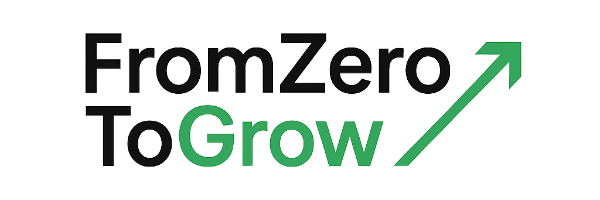Fixed vs. Flexible Schedules: Pros and Cons
Explore the pros and cons of fixed versus flexible work schedules to find the best fit for your productivity and lifestyle.

Choosing the right work schedule can significantly impact your productivity, mental health, and overall satisfaction. Fixed schedules, like the 9-to-5, offer stability and predictability, while flexible schedules provide freedom to adjust work hours to personal needs.
Key Points:
- Fixed Schedules: Predictable hours, easier planning, and clear boundaries between work and personal life. Best for jobs requiring consistency (e.g., healthcare, manufacturing).
- Flexible Schedules: Customizable hours, better alignment with energy levels, and improved work-life balance. Ideal for roles in tech, creative fields, or remote work.
Quick Comparison:
| Aspect | Fixed Schedules | Flexible Schedules |
|---|---|---|
| Work-Life Balance | Clear separation, easy planning | Adjustable to personal needs, less rigid |
| Predictability | Consistent routine, reliable operations | Dynamic but harder to plan for teams |
| Productivity | Structured environment | Aligns work with peak energy hours |
Your choice depends on your job, personal priorities, and how you work best. Fixed schedules suit those who thrive on structure, while flexible options empower those who value autonomy.
Flexible Work Hours vs. Fixed Work Schedules – Can We Bridge Divides in This Debate?
What Is a Fixed Schedule?
A fixed schedule is a work setup where employees stick to the same hours and days every week. Think of the classic 9-to-5 workday - your start time, end time, and workdays stay consistent week after week.
Also known as fixed shifts, this type of schedule provides a structured framework that many businesses depend on to keep operations running smoothly. Unlike flexible schedules, where hours might vary, fixed schedules bring predictability for both employers and employees. This regularity helps with both daily workflows and long-term planning.
How Fixed Schedules Work
Fixed schedules stick to a routine: you clock in and out at the same times every workday. This structure creates a clear rhythm, making it easier for teams to coordinate and maintain reliable operations.
Jobs That Use Fixed Schedules
Fixed schedules are essential in industries where consistency is key. You’ll often find them in fields like healthcare (nurses, doctors, EMTs), manufacturing (factory and warehouse workers), customer service, emergency services, security, retail, hospitality, and public transportation. These roles often require round-the-clock or tightly scheduled services, making fixed shifts a natural fit.
Benefits of Fixed Schedules
One of the biggest perks of a fixed schedule is predictability. It’s easier to plan personal appointments, family time, and social events when you know your work hours won’t change. This consistency also helps establish clear boundaries between work and personal life, allowing you to fully unwind once your shift ends.
For teams, fixed schedules simplify coordination - meetings, collaborative projects, and daily tasks run more smoothly when everyone is on the same page.
Financially, fixed schedules offer stability. Knowing your exact hours each week makes budgeting simpler and supports long-term financial planning. Many fixed-schedule jobs also come with traditional perks like health insurance, paid time off, and retirement contributions. While this setup isn’t for everyone, it’s a reliable option for balancing work with life.
What Is a Flexible Schedule?
A flexible schedule allows employees to decide when, where, and how they work, tailoring their hours to fit personal needs and maximize productivity.
This concept gained traction in the U.S. after COVID-19 demonstrated that work could thrive beyond the standard 9-to-5 office hours. It reflects a shift from the old mindset of “time equals productivity” to one that prioritizes results and output.
Unlike rigid schedules that emphasize uniformity, flexible schedules acknowledge individual differences in energy levels and personal obligations, offering a more adaptable approach to work.
How Flexible Schedules Work
Flexible schedules come in various forms, each offering unique freedoms. For instance, flextime allows employees to set their start and end times within a defined range. A common example might require everyone to be available from 10:00 AM to 3:00 PM, but workers can begin their day as early as 7:00 AM or as late as 10:00 AM.
Another option is the compressed workweek, where employees work the same total hours in fewer days - like four 10-hour days instead of five 8-hour ones. This setup provides consistent three-day weekends, which can greatly enhance work-life balance.
Remote work and hybrid models add location flexibility, giving employees the freedom to work from home, the office, or both. Some companies also offer job sharing, where two part-time employees split the responsibilities of one full-time role, each working different hours or days.
At its core, a flexible schedule shifts the focus from tracking hours to achieving results, making it a versatile option for many industries that tailor work hours to meet their specific needs.
Jobs That Use Flexible Schedules
Tech companies have been at the forefront of adopting flexible schedules. Roles like software developers, data analysts, digital marketers, and IT professionals often operate on project-based timelines, making the traditional 9-to-5 unnecessary. These positions also benefit from deep-focus work, which is more effective when employees choose their most productive hours.
Creative fields such as graphic design, writing, marketing, and advertising also embrace flexibility. These industries understand that creativity doesn’t follow a set schedule, and giving workers control over their time often leads to better outcomes.
Knowledge-based roles in consulting, finance, research, and professional services are increasingly offering flexible options. Sales professionals, too, often work flexible hours since their performance depends on meeting client needs and achieving targets rather than adhering to strict timeframes.
Even industries known for rigid schedules are starting to adapt. Healthcare systems, for example, are introducing flexible options for administrative staff, while educational institutions are offering flexibility to online instructors, curriculum developers, and support teams.
Benefits of Flexible Schedules
Flexible schedules come with a range of advantages that extend across industries and job types. For one, they improve work-life balance by allowing employees to adjust their hours around personal needs. Parents, early risers, and night owls alike can structure their days to suit their natural rhythms, which often leads to lower stress and higher job satisfaction.
This approach can also enhance productivity. When employees work during their peak energy hours, they’re more likely to produce high-quality work. For example, someone who’s sharpest at 6:00 AM can tackle complex tasks in the morning, while those who thrive later in the day can save their most demanding projects for the afternoon.
Focusing on results rather than hours can motivate employees to work more efficiently. With control over their schedules, they tend to feel more ownership of their tasks, which often leads to better performance.
Flexible arrangements also save time and money. Remote work, even part-time, eliminates commutes, reduces gas expenses, and minimizes wear on vehicles. For many, this can mean saving several hours and $50-100 per week in transportation costs.
Finally, flexible schedules promote personal health and wellness. Employees can fit in exercise during slower work periods, attend medical appointments without taking time off, or simply get better sleep by avoiding early-morning commutes that clash with their natural energy cycles.
Fixed vs. Flexible Schedules: Complete Comparison
Choosing between fixed and flexible schedules comes down to understanding how each impacts work-life balance, predictability, and productivity. Fixed schedules offer structure and clear boundaries, while flexible schedules emphasize personal control and adaptability. The best option depends on your industry, personal preferences, and work style.
Side-by-Side Comparison Chart
| Aspect | Fixed Pros | Fixed Cons | Flexible Pros | Flexible Cons |
|---|---|---|---|---|
| Work-Life Balance | Clear separation of work and personal life; Set weekends for rest | Limited personal flexibility; Less time for hobbies; Risk of burnout | Customizable work-life integration; Better personal responsibility management; Reduced stress | Work-life boundaries may blur; Irregular hours or weekend work; Harder to disconnect from tasks |
| Predictability | Consistent routine; Easier planning; Reliable staffing levels; Better collaboration availability | Hard to adapt to unexpected demands; Inflexible during workload spikes | Adapts to personal and workload needs; Greater responsiveness | Unpredictable for team planning; Scheduling complexities; Frequent changes; Communication challenges |
| Productivity | Structured environment fosters focus; Easier performance tracking and supervision | Risk of burnout; Missed peak efficiency hours; Potential procrastination | Encourages autonomy; Aligns work with peak productivity times; Higher quality output | Requires self-discipline; Potential distractions; Harder to maintain focus |
This chart highlights key differences, helping you pinpoint which schedule fits your work and lifestyle needs.
Collaboration and teamwork are heavily influenced by scheduling styles. Fixed schedules make spontaneous teamwork easier, enabling quick check-ins and fostering stronger team relationships. Impromptu discussions and decisions can happen naturally, improving overall efficiency.
On the other hand, flexible schedules require more deliberate coordination. With varying hours or locations, teams must rely on scheduled meetings and digital tools to stay connected. Maintaining cohesion in such setups demands intentional communication and regular check-ins.
Cost considerations also differ. Fixed schedules often lead to higher overtime costs but simplify payroll management and ensure compliance with labor regulations. Flexible schedules, while potentially reducing overtime through dynamic staffing, introduce complexities in tracking hours and maintaining accurate records. For larger organizations, managing these arrangements can significantly increase administrative overhead.
Employee morale often reflects how well a schedule aligns with individual needs. Fixed schedules can frustrate those who value autonomy or have caregiving responsibilities, but they provide comfort and stability for employees who thrive on routine and structure. Flexible schedules, by offering autonomy and accommodating personal needs, typically boost morale and job satisfaction. However, they can be stressful for workers who struggle with time management or setting boundaries.
The management approach for each schedule type also varies. Fixed schedules allow for traditional oversight, with managers monitoring attendance and providing real-time feedback during set hours. This approach simplifies performance tracking and support. Flexible schedules, however, require managers to focus on results rather than hours worked. Building trust, improving communication, and evaluating deliverables become essential skills for leaders in this setup.
Each schedule type has its strengths and challenges, and the right choice depends on balancing organizational goals with individual and team needs.
How to Choose the Right Schedule for You
Now that you’ve weighed the pros and cons, it’s time to determine which schedule works best for your unique situation. The right choice will depend on your job requirements, personal priorities, and long-term career goals.
Consider Your Job and Industry
Your job and industry play a big role in what scheduling options are available. Certain professions - like manufacturing, retail, and healthcare - often require fixed schedules because they involve on-site work, specialized equipment, or real-time customer interactions. If your role depends on being physically present at specific times, flexibility may not be an option.
On the other hand, industries like technology, finance, and consulting are more likely to offer flexible arrangements. In fact, about 58% of Americans now work remotely at least one day a week, though the level of flexibility varies by sector. For roles that involve heavy collaboration, such as brainstorming sessions or client meetings, a fixed schedule might make more sense. However, if your work is more independent and deadline-driven, a flexible schedule could provide the autonomy you need to excel.
Think About Your Personal Needs
Your personal priorities and work style should also guide your decision. Some people thrive on structured routines, finding that fixed schedules help them stay focused and productive. Others perform better when they can align their work hours with their natural energy peaks, making flexible arrangements more appealing.
Family responsibilities are another key factor. For instance, parents of school-age children might prefer the predictability of a fixed schedule, while those managing irregular commitments - like caregiving for relatives - could benefit from the freedom of flexible hours. It’s all about finding a balance that works for your life outside of work.
Know Your Legal Rights and Company Policies
Understanding your rights and your company’s rules is essential when choosing a schedule. U.S. labor laws, such as the Fair Labor Standards Act (FLSA), ensure that non-exempt employees receive overtime pay for working more than 40 hours a week. Your company’s policies, usually outlined in an employee handbook, will provide additional details about how scheduling options are applied in your workplace. Being informed about these guidelines can help you align your schedule with both your professional and personal needs.
Build the Right Mindset for Any Schedule
No matter which schedule you choose, success will depend on your mindset and habits. Discipline is key - whether you’re sticking to a fixed routine or managing your time effectively with flexible hours.
Adaptability is another critical skill. Fixed schedules require you to adjust to external structures, while flexible arrangements demand that you create your own framework and stay accountable. Developing this adaptability can help you thrive, no matter how your circumstances change.
As FromZeroToGrow emphasizes, growth comes from consistent action. Whether you’re working fixed hours or setting your own schedule, the goal is to make the most of your time and stay present in your work.
Think of your schedule as part of your broader personal and professional growth strategy. Fixed schedules might offer stability during certain stages of life, while flexible arrangements can support entrepreneurial goals or skill-building. Consider this: 89% of companies report improved employee retention with flexible work options, while 25% of employees have quit jobs due to a lack of scheduling flexibility. Despite this, 79% of people surveyed still prefer one stable full-time job over juggling multiple roles with flexible hours and locations. Your choice should reflect what’s most important to you right now - and where you see yourself heading in the future.
Conclusion
Choosing between a fixed or flexible schedule boils down to understanding your personal preferences and lifestyle. Think about whether you excel with a structured routine or if you value the freedom to shape your own day. Pinpoint when you're most productive, and consider how each option affects your work-life balance.
Key Takeaways
Here are some important points to guide your decision:
- Do you perform better with a set routine, or do you prefer the adaptability of a flexible schedule?
- Identify your peak productivity hours and how they align with each scheduling approach.
- Consider how each option impacts your ability to maintain a healthy work-life balance.
Adapting to Any Schedule
No matter which schedule you choose, success lies in tailoring your habits to support your goals. Build routines that complement your work style and be open to tweaking them as needed.
FAQs
How do I decide between a fixed or flexible schedule for my work and personal life?
Choosing between a fixed or flexible schedule comes down to what suits your lifestyle, responsibilities, and how you work best. A fixed schedule provides stability and clear boundaries, making it a great choice if you thrive on routine and prefer a structured day. In contrast, a flexible schedule gives you the freedom to tailor your work hours around personal commitments and your most productive times.
To determine what fits you best, consider your daily priorities and how much flexibility you need to balance work and personal life. If you have the option, try both approaches to see which one aligns more naturally with your goals and habits. Understanding your needs will guide you toward the schedule that helps you stay productive and balanced.
How can I effectively manage a flexible schedule to stay productive while maintaining work-life balance?
To handle a flexible schedule successfully, begin by establishing firm boundaries for your work hours. This helps prevent overworking and reduces the risk of burnout. Make sure to communicate these boundaries clearly to colleagues, clients, or family members so they understand and respect your availability.
Organize your priorities by outlining a daily or weekly plan, giving top attention to tasks that have the most impact. Setting up a dedicated workspace can also improve focus and create a clear divide between work and personal life. Finally, take time to review your schedule regularly and tweak it as needed to maintain a balanced approach to both your professional and personal responsibilities.
In which industries or job roles are flexible schedules becoming more common, and what is driving this trend?
Flexible schedules are becoming more common in fields like technology, healthcare, and manufacturing. This shift can be credited to a combination of factors: the push for better work-life balance, increasing focus on mental health, and advancements in technology that make remote work more accessible than ever.
Jobs such as software developers, healthcare professionals, and manufacturing workers are among those embracing these flexible setups. These arrangements not only help lower stress levels for employees but also boost productivity and make companies more appealing to skilled professionals in today’s competitive job market. Additionally, societal shifts - like placing greater importance on family responsibilities and meeting changing workforce expectations - are fueling this growing trend.





